The most popular quarry found in our Pacific Northwest rivers is the Winter Steelhead, we will teach you how to catch them. Although most of our rivers host Steelhead throughout much of the year, it is the winter months that bring in strong numbers of fish and plenty of excitement.
I want to share with you a few of my favorite techniques to catch Winter Steelhead. These techniques are popular with beginner and experienced anglers alike, because they catch fish any river that hosts Steelhead.
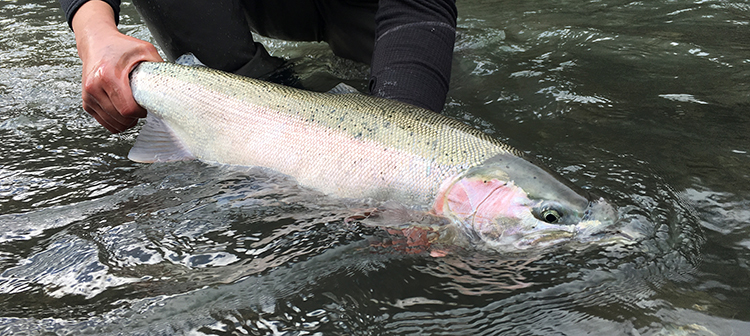
Winter Steelhead River Fishing
It takes extra dedication and preparation to have an enjoyable and successful time fishing during the winter. Those early mornings on the river bank can be downright frigid, frosty, or rainy and windy. But I layer up, keep my waders and raingear in tip-top shape, to help lock out the weather.
And throughout my time as a Winter Steelhead fisherman, there have been countless moments where I am out in the elements and question my sanity. But once the line starts to pull from the take of a Steelhead, all the second-guessing goes away and the adrenaline kicks in! Honestly, I think the inclement weather I’ve found myself in while winter fishing makes me want that catch all the more.
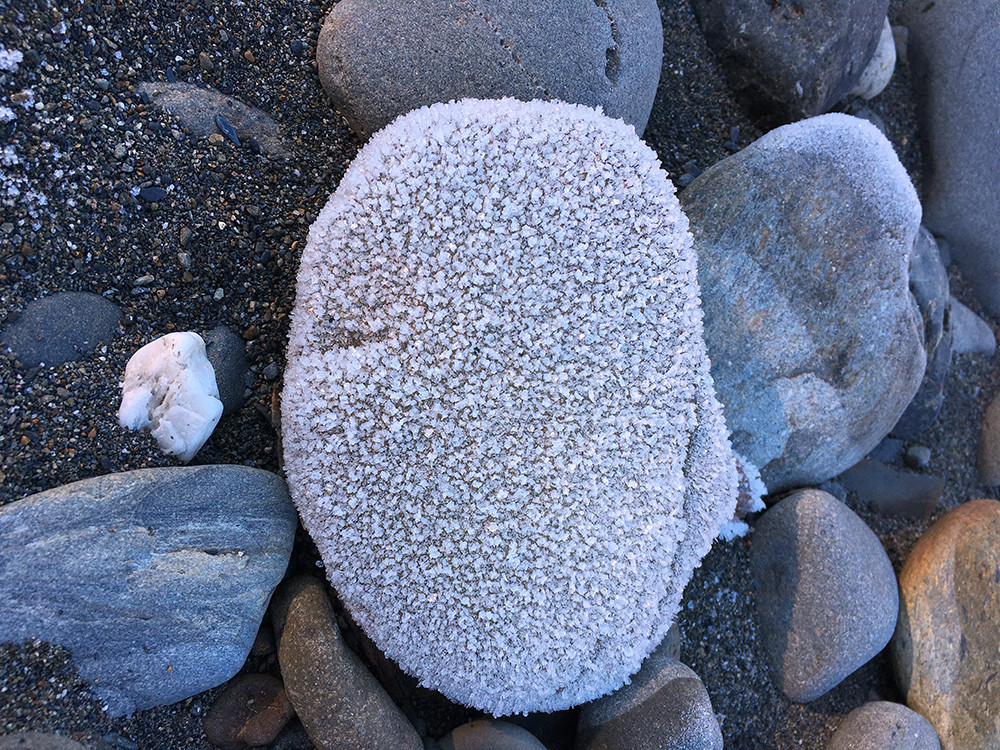
Where to go fishing?
Experienced Winter Steelhead fishermen understand the relationship between a specific river and weather patterns. This is one of the foundations that tell us where to go and how to approach a Steelhead stream. Here are a few factors that affect how high or low, and how dirty or clear a river will be on any given day. Each river has a upper and lower threshold for how much volume of water is “fishable”. And you may be selecting a specific technique whether the river is low and clear, that perfect Steelhead Green color, or high and dirty.
- Precipitation: The amount of rain in the watershed is one of the biggest factors to water volume and clarity.
- Snow Level: Many of our rivers originate in the mountains, and even a heavy amount of rain down in the river valleys may be falling as snow in most of the upper watershed. Conversely, there may be no rain but if the snow level rises from say 1,000′ to 6,000′ elevation, the river may rise just from snow melt.
- Dams: If a river has a major dam in the upper watershed, the flows can be manipulated by the dam operator for the purpose of flood control, irrigation, or power generation.
Many rivers have gauge stations that monitor river levels. You will either hear fellow anglers refer to the river level as level in feet (“The river is at 5 feet”) or in CFS or Cubic Feet Per Second (“The river is at 2,800 CFS and could be higher than 4,000 CFS tomorrow after this rain”). Check out the USGS Current Conditions for Washington, Oregon, Idaho, California.
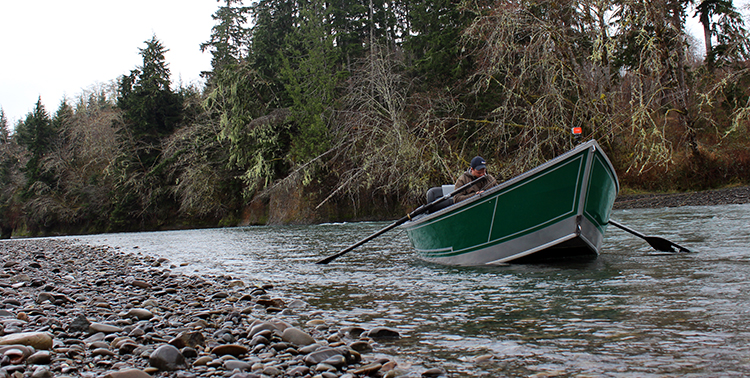
How to catch Winter Steelhead in our rivers
When I started Steelhead fishing, I didn’t have a clue on how to select the perfect technique for the location and situation I was in. Like many beginners, it took trial and error, and some really experienced Steelheaders to mentor me. Over time, I developed experience. And now I feel pretty darned confident in my choices.
Read more: The Best 15 Lures for Winter Steelhead Fishing
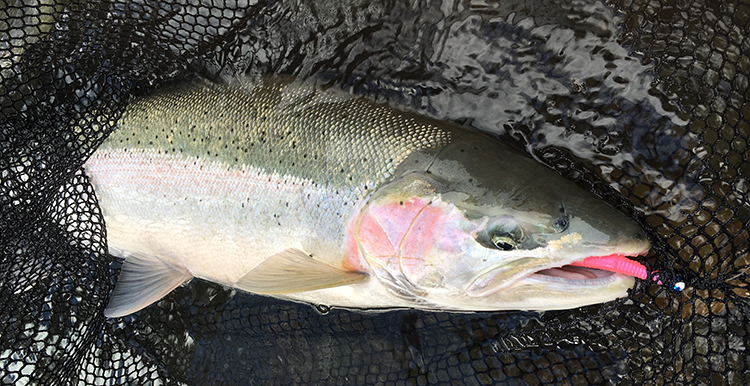
Float fishing with a bobber and jig
The current generation of anglers has made float fishing the baseline technique for Winter Steelhead fishing. By utilizing a 3/8 to 3/4 ounce slip float to suspend your Steelhead Jig at the perfect depth. And a floating braided line like P-Line X-Braid that is easily mended to give your float an uninterrupted drift downstream through the run. It offers the most effective presentation for the longest period of time as your offering drifts in the current. Great for fishing long seams, slower and deeper holding water, and drifts full of snags such as boulders.
- 1/16 ounce jigs for ultra low clear water, bright sunny days, non-aggressive or heavily pressured Winter Steelhead.
- 1/8 ounce jigs for most situations. The most popular size by a wide margin.
- 1/4 ounce jigs for high and dirty river flows, and aggressive Winter Steelhead.
Read more: Master the Art of Float Fishing for Winter Steelhead
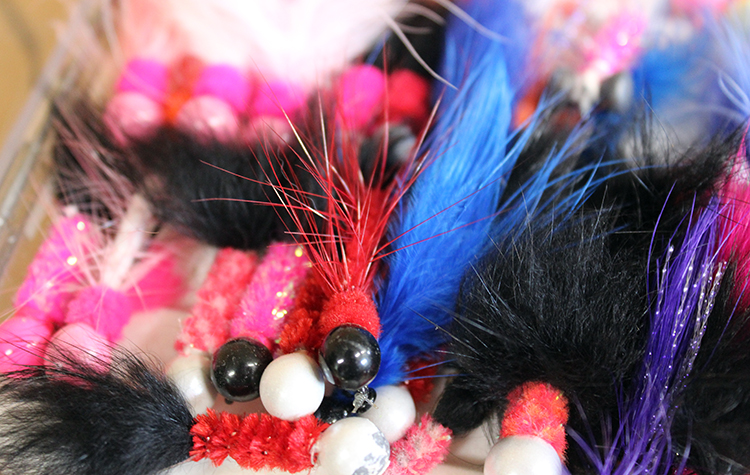
Drift fishing for Winter Steelhead
Drift fishing is one of the original Winter Steelhead fishing methods. Steelhead pioneers knew that, for the most part, Winter Steelhead spend most of their time near the river bottom. The prime zone where water depth offers them cover and protection, and boulders and wood slow the current just enough to make holding in place a little easier. You want a sinker attached to your mainline heavy enough to get down to the bottom, but light enough to tap-dance on top of the gravel, allowing your cured salmon roe, corky & yarn, or plastic worm to “drift” down the seam. Still deadly effective.
Read more: How to Cure Salmon Eggs
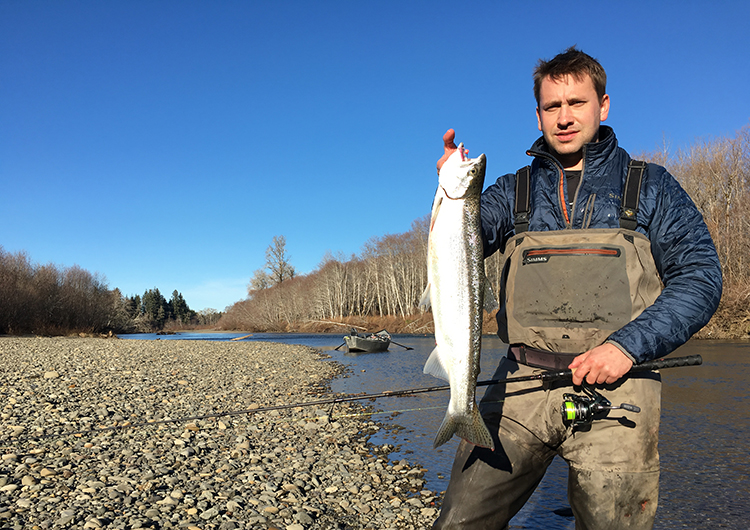
Swinging spoons for Winter Steelhead
This piece of metal has captured the hearts of many Steelhead anglers. It’s shape and size allow it to work a large swath of river from a fixed standing position on the bank. As the Steelhead Spoon swings downriver with the current, it’s enticing flutter and flash triggers something in nearby Steelhead that cause them to attack with a purpose.
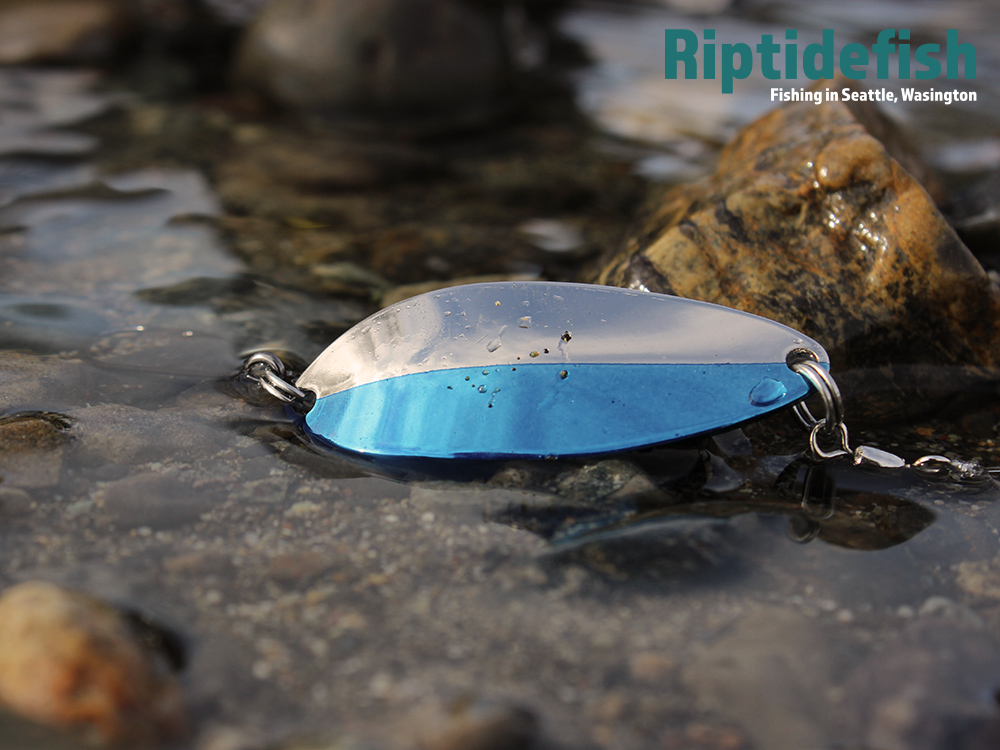
Spinner fishing for Winter Steelhead
With the long grocery list of tackle needed to put together some of these rigs, it sure is nice to revert back to the simplicity of tying on one lure and making a cast. However, don’t forget that some of the most simple techniques are also very effective. Spinners offer the perfect pairing of color and flash that can drive Steelhead wild. Some crowd favorites are Blue Fox Vibrax Spinners and Steelhead Slammer Spinners.
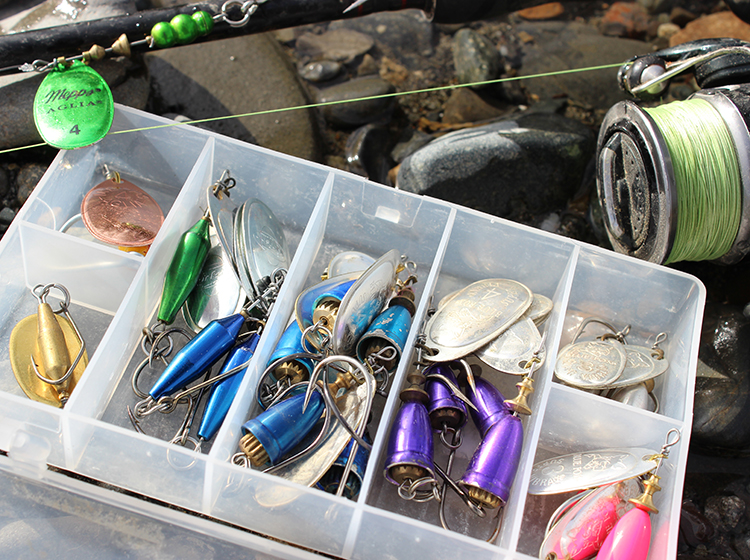
Plunking for Winter Steelhead
Plunking is a technique that has slowly gone by the wayside in so many great Pacific Northwest fishing holes. When the rainstorm hits and lifts the river levels up to the edge of their banks, and you know that Winter Steelhead are making a beeline sprint upriver… it’s time to intercept them with the plunking gear.
Plunking utilizes bait (usually cured eggs or sand shrimp) with a Spin N Glo as the attractant. Cast out a heavy pyramid sinker to anchor your setup in the middle of the travelling lane. Then sit back with a cup of coffee and chat it up with your river neighbors. Great technique when the rivers are high and dirty.
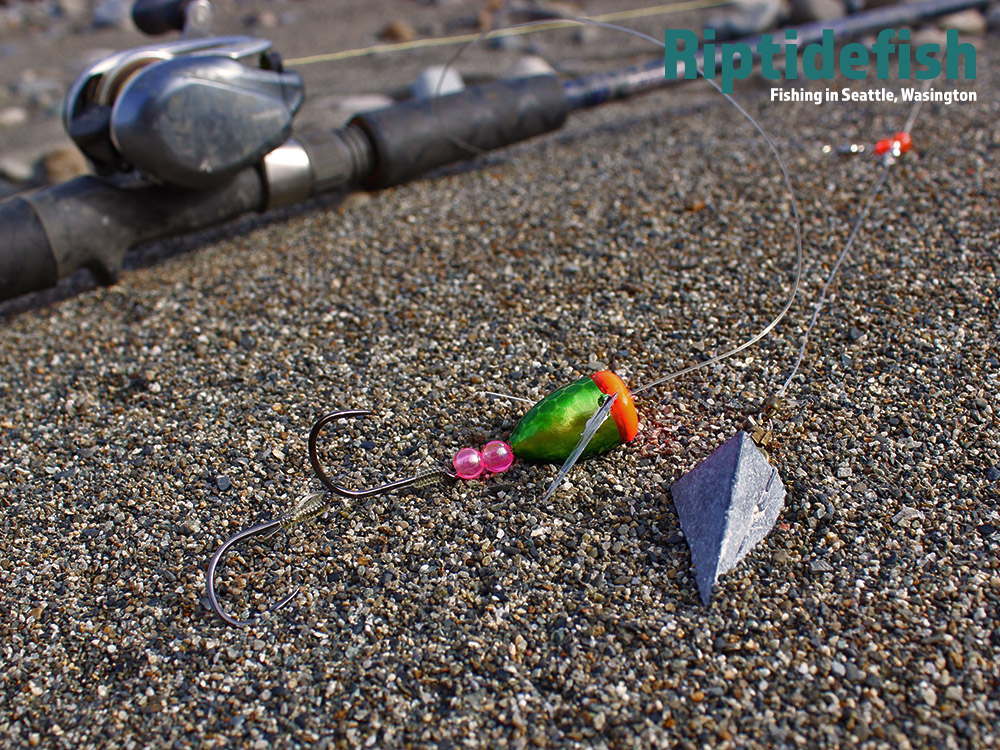
Side drifting from a boat
So you’ve done a little bit of drift fishing. Ain’t nothing different about side drifting except the boat is moving and your drift can last a half of a river mile! Side drifting is one of the best methods to work medium to high river flows from a boat. Because you’re not drifting against a moving current compared to drift fishing, you can downsize the mainline and weights considerably. Lighter rods, line and weights really make feeling the unforgettable Steelhead tug a breeze.
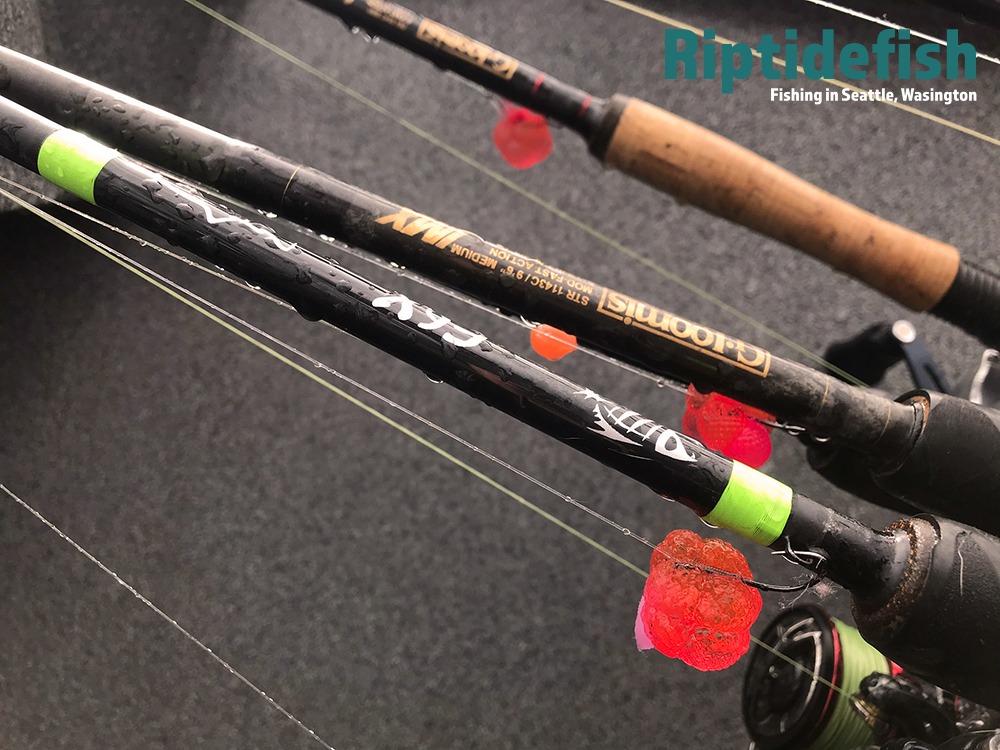
Bobber dogging from a boat
A fairly recent addition to our Winter Steelhead fishing arsenal. Essentially, bobber dogging is just side drifting with a bobber on the line. Well, a little more complicated than that but not by much! Stop your bobber 6′ – 8′ above your side drifting weight. Then cast and mend your braided mainline downstream to help pull the rig along. The effectiveness of side drifting with a visual component that makes it easy to identify when you get a bite.
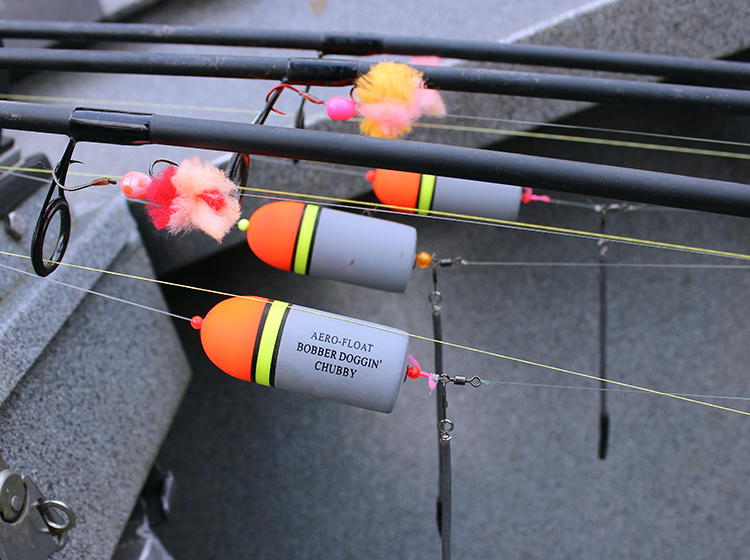
Pulling Steelhead plugs from a boat
I pull back on the oars at the top of a beautiful stretch of river, slowing the boat down to a crawl. It’s deep and the river speed equals a brisk walk. My buddies in the front of the drift boat let out 50 feet on the reel counter, giving those plugs plenty of room to wiggle and dive at the end of the line. The drift boat does the work, and the plugs back down the current until one of them gets slammed! If you do it right, they either have to swim back downriver where they came from, or take a bite out of your plug. Very effective boat technique. Yakima Bait Mag Lips are one of my absolute favorites for pulling plugs for Winter Steelhead.

Wild Steelhead, protect what you cherish.
During certain times of the year, each river system has a greater concentration of Wild Steelhead. In Washington State and much of their range, they must be released unharmed. We don’t even fully remove them from the water, as to help aid their recovery. If you are strictly into fishing for Winter Steelhead for something to take home, focus on the time of year where there is an abundance of Hatchery Steelhead. For most of Western Washington, this is November through January. By February, most of our rivers have already peaked for hatchery fish and you will find more Wild Steelhead than anything else. A couple pointers for responsibly enjoying Catch & Release Wild Steelhead fishing…
- Use single point, barbless hooks.
- Rig up with heavier mainline and leader so that you aren’t taking forever to bring in a wild fish, long fights can push these fish to the point of lethal exhaustion.
- Use a knotless net so that you are not pulling of their protective slime coating or scales.
- Never beach a wild fish out of the water. Once they submit to being pulled toward shore, lead them into the shallows, firmly grab the tail with a wet hand, and remove the hook from the mouth.
- Don’t take forever taking photos. Have a camera ready. Get the fish ready for release, but set a goal of only a couple seconds focused on a photo or two before reviving and letting em swim!
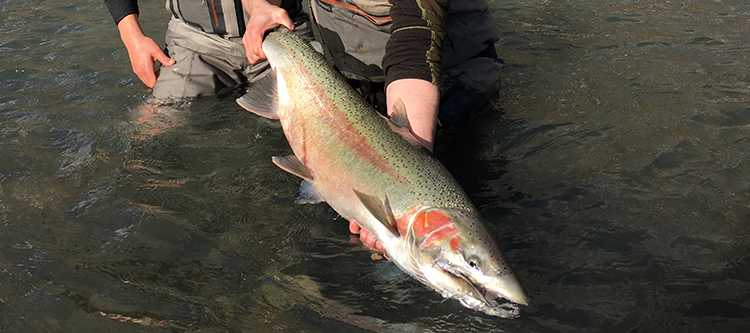


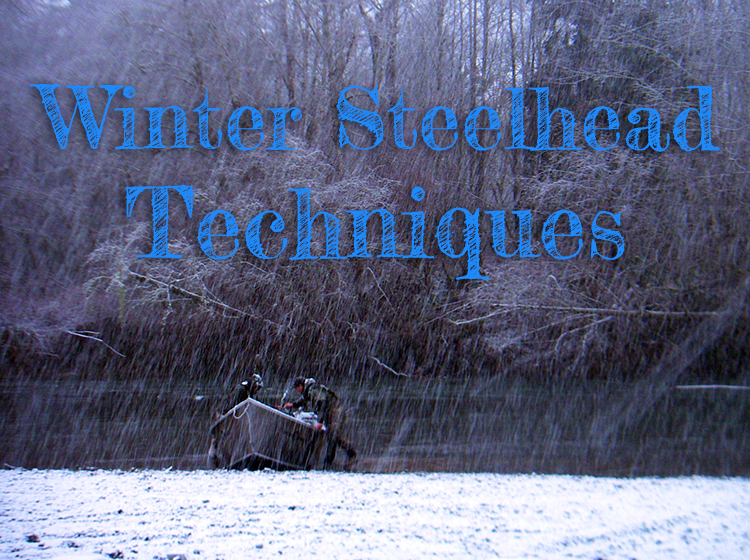







 Fishing at Borst Lake – Snoqualmie, Washington
Fishing at Borst Lake – Snoqualmie, Washington
